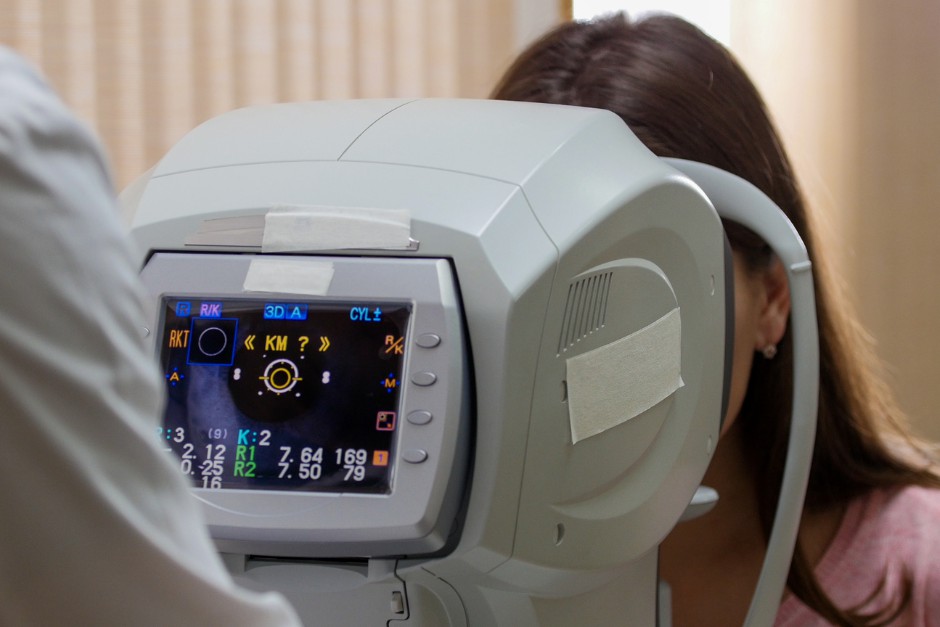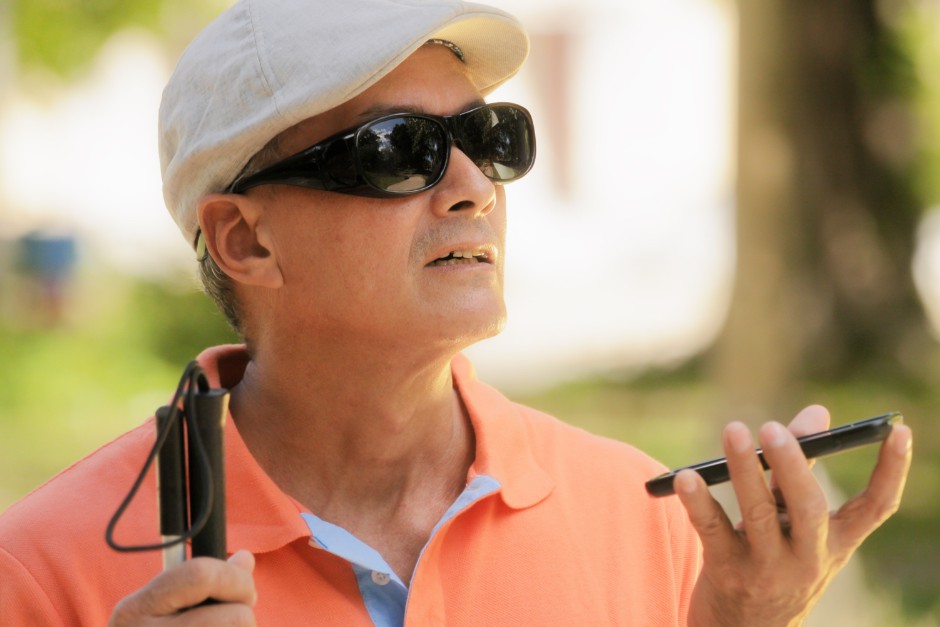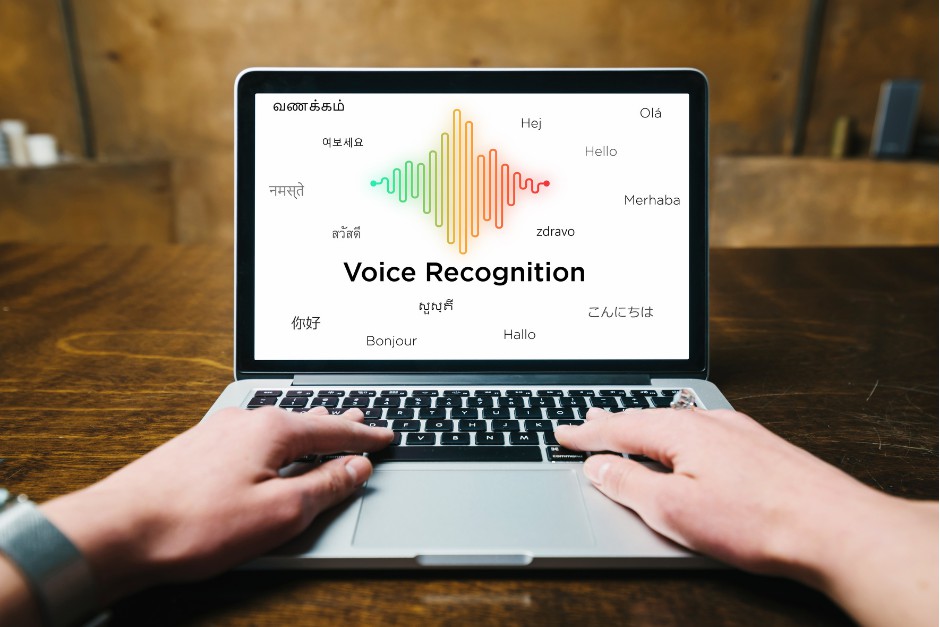How does technology change our life? People may often associate the answer with smartphones or computers. It is true that technology has penetrated deeply into our lives and improves the quality of life little by little. Moreover, in the world of people with low vision, technology is not only a convenient tool but also a powerful force that changes lifestyles and enhances their living independence. Let’s see how technology changes the life with low vision.
Understanding Low Vision
Visual impairments, also known as visual disabilities or visual deficits, refer to conditions in which an individual’s ability to see is significantly compromised, making it challenging to perform various visual tasks that those with normal vision can do without difficulty. It also refers to a group of conditions or disorders that result in a significant reduction in the ability to see. These conditions can affect one or both eyes and may include a wide range of visual acuity, visual field, and other vision-related functions. Visual impairments can be caused by various factors, including eye diseases, eye injuries, genetic conditions, and age-related changes.
Visual impairments encompass a large variety of conditions and levels of severity. The criteria for classifying individuals as having visual impairments often depend on factors like visual acuity (clarity of vision), visual field (also known as field of view or FOV, the area a person can see without moving their eyes), and functional vision (how well an individual can use their remaining vision to perform daily tasks). Here are some common criteria used to define visual impairments:
Visual Acuity: Visual acuity is a measure of how clearly an individual can see. It is typically measured using the Snellen chart, and visual impairments are often categorized based on acuity.
Blindness: Legal blindness is often defined as having a best-corrected visual acuity of 20/200 or worse in the better eye. This means that a person with legal blindness sees an object at 20 feet what a person with normal vision sees at 200 feet.
Low Vision: Low vision describes people with significant visual impairment but who are not legally blind. Their visual acuity may be better than 20/200, but they still face difficulties with daily tasks.

Visual Field: The visual field is the area that can be seen while the eye is fixed on a central point. Loss of peripheral vision can be a criterion for visual impairment.
Constricted Visual Field: People with a significantly reduced peripheral visual field may be considered visually impaired.
Functional Vision: This criterion takes into account how well an individual can use their remaining vision for daily tasks, such as reading, writing, and navigating their environment. It considers the impact of visual impairment on daily life.
Regardless of the type or extent of visual impairment, it profoundly impacts people’s daily life independence, especially when it comes to learning and working. Meanwhile, it’s important to note that criteria for visual impairments can vary between regions and organizations. Some people may have visual impairments that do not fit neatly into these categories, so a comprehensive assessment of an individual’s visual abilities is crucial to determine the extent of their visual impairment and their specific needs for support and assistive technologies.
Types of Assistive Technology
Thanks to the rapid development of assistive technology, people with vision loss are able to improve their lives nowadays. Assistive technology comes in various forms, each designed to address the unique needs of those with visual impairments. For instance, screen readers and voice recognition software are invaluable tools for those who rely on auditory input.
 Screen readers convert text on computer screens into synthesized speech, allowing users to read the digital content. Voice recognition software, on the other hand, enables users to control their devices and input text through spoken commands, making tasks like sending messages or finding information more accessible.
Screen readers convert text on computer screens into synthesized speech, allowing users to read the digital content. Voice recognition software, on the other hand, enables users to control their devices and input text through spoken commands, making tasks like sending messages or finding information more accessible.
Furthermore, magnification software and electronic video magnifiers are crucial for people with low vision. These tools enlarge text and images displayed on screens or printed materials, providing clearer visuals and making it easier to focus on details. And navigation and location applications have revolutionized mobility for the visually impaired. GPS navigation and location recognition apps provide users with real-time information and spoken directions to help them confidently move around and reach their destinations while avoiding obstacles.
 In particular, electronic Braille and tactile imagery are tactile solutions for the blind and visually impaired. Electronic Braille displays convert digital text into Braille characters that users can feel, providing access to digital content. Tactile imagery, using raised patterns and textures, allows users to interpret visual information through touch. These assistive technologies are transforming the lives of people with visual impairments, offering greater accessibility, independence, and opportunities in various aspects of daily living. Learn more about common types of low vision aids: Common Types Of Low Vision Aids.
In particular, electronic Braille and tactile imagery are tactile solutions for the blind and visually impaired. Electronic Braille displays convert digital text into Braille characters that users can feel, providing access to digital content. Tactile imagery, using raised patterns and textures, allows users to interpret visual information through touch. These assistive technologies are transforming the lives of people with visual impairments, offering greater accessibility, independence, and opportunities in various aspects of daily living. Learn more about common types of low vision aids: Common Types Of Low Vision Aids.
Future Trends and Challenges
Current technology plays a pivotal role in enhancing the independence and quality of life for people with visual impairments. Assistive tools like screen readers, electronic magnifiers, voice recognition, and navigation apps provide them with the means to access information, navigate their surroundings, and communicate effectively. Electronic Braille and tactile imagery enable tactile reading and interpretation of visual information. Furthermore, emerging technologies like smart glasses and artificial intelligence (AI) are unlocking more and more possibilities for the visually impaired.
Looking ahead, there are some interesting improvements in waiting for the assistive technology landscape for those with visual impairments. However, there are issues to deal with. Existing obstacles like availability and cost continue to hinder the broad use of these technologies. Many people who require advanced assistive devices and software may not be able to afford them due to their prohibitive cost. Furthermore, accessibility differs by location, so some people may not have full access to the newest assistive technologies.
 On the other hand, there is a lot of hope for future developments in assistive technology. Artificial intelligence (AI) is expected to greatly enhance the functionality of assistive devices. For those with visual impairments, machine learning and AI algorithms can offer more sophisticated, context-aware support. Predictive modeling, natural language processing, and AI-driven picture identification can all improve user experience by providing on-demand help with a variety of everyday tasks.
On the other hand, there is a lot of hope for future developments in assistive technology. Artificial intelligence (AI) is expected to greatly enhance the functionality of assistive devices. For those with visual impairments, machine learning and AI algorithms can offer more sophisticated, context-aware support. Predictive modeling, natural language processing, and AI-driven picture identification can all improve user experience by providing on-demand help with a variety of everyday tasks.
Moreover, Virtual reality (VR) is starting to revolutionize the game. By immersing users in digitally recreated environments, VR technology can help individuals with visual impairments to access information and explore spaces in ways never before possible. VR applications are being developed to assist with orientation and mobility training, education, and entertainment.
 Take Acesight VR E-glasses as an example, it is a wearable low vision device in this category. It helps people with vision loss maximize their residual visual function and get a better vision experience. Acesight VR E-glasses provides excellent image quality for visually impaired people to read, write, enjoy movies and theaters, and do handcrafts, making it easier for them to access information and explore their hobbies. And it’s still upgrading to offer better experiences to improve the life of the visually impaired group.
Take Acesight VR E-glasses as an example, it is a wearable low vision device in this category. It helps people with vision loss maximize their residual visual function and get a better vision experience. Acesight VR E-glasses provides excellent image quality for visually impaired people to read, write, enjoy movies and theaters, and do handcrafts, making it easier for them to access information and explore their hobbies. And it’s still upgrading to offer better experiences to improve the life of the visually impaired group.
In conclusion, while challenges like cost and availability persist, the future of assistive technology for the visually impaired is still bright. The integration of AI, VR and other types of technologies holds the potential to provide even more independence and accessibility to those with visual impairments, unlocking new possibilities and enriching their lives. It’s worth expecting.

